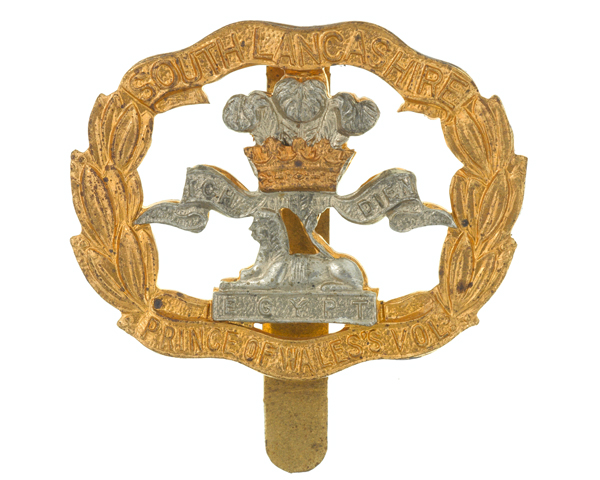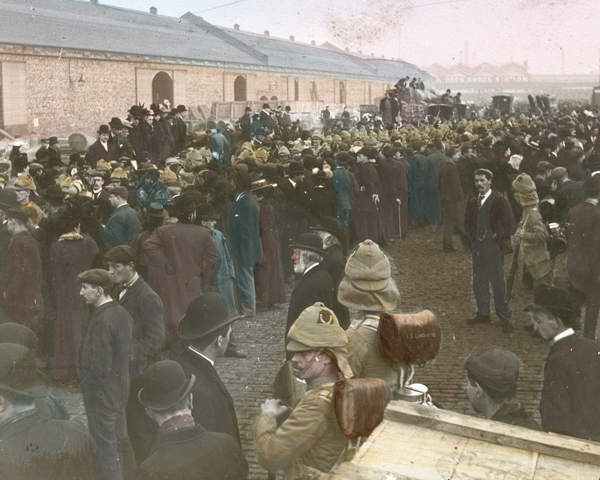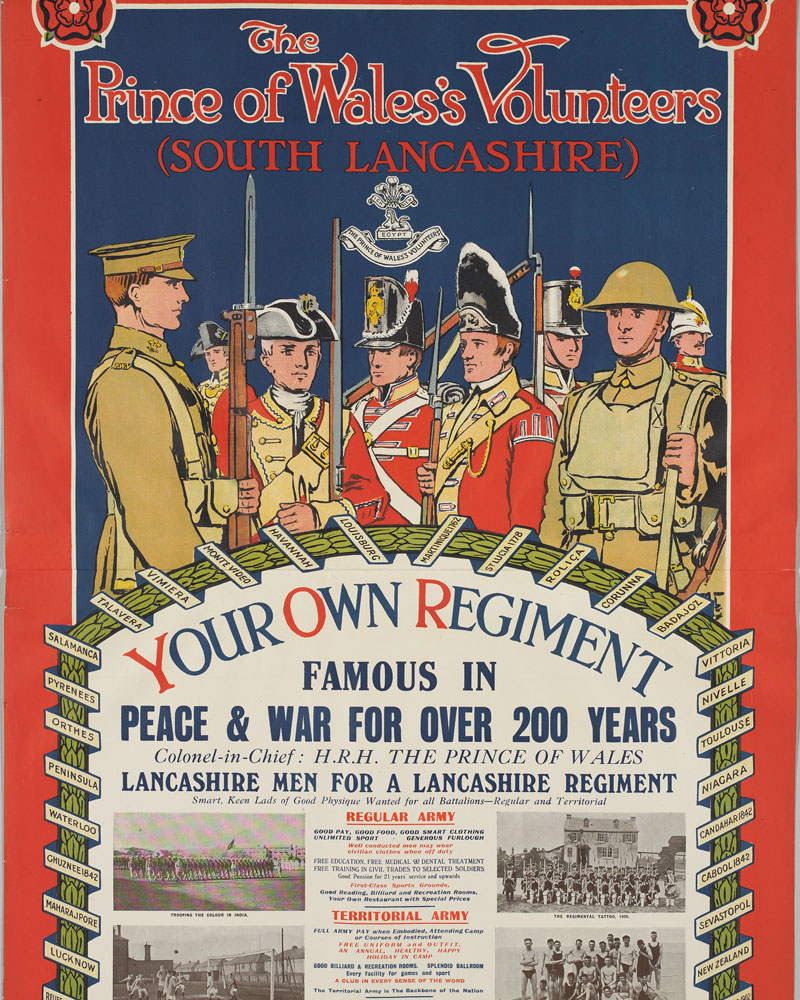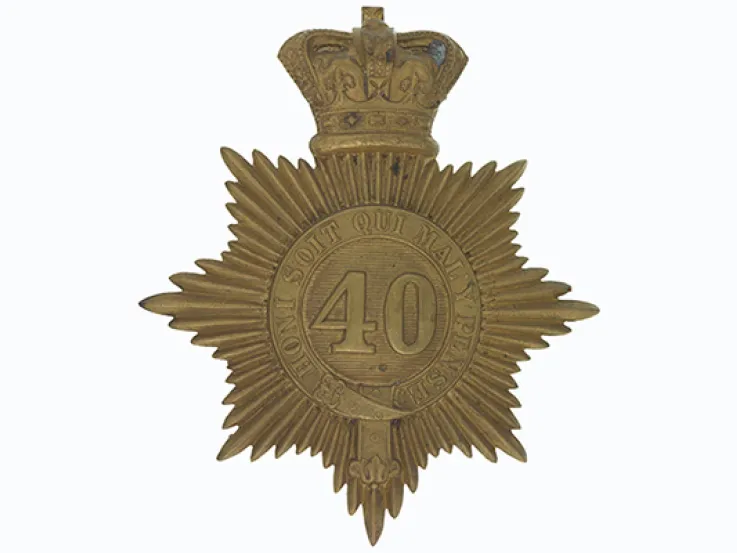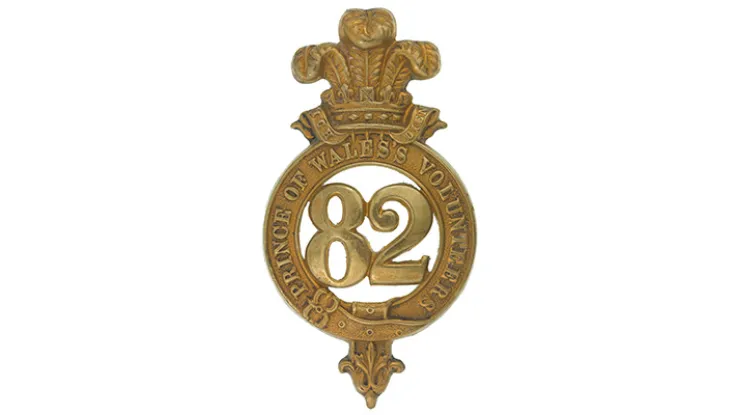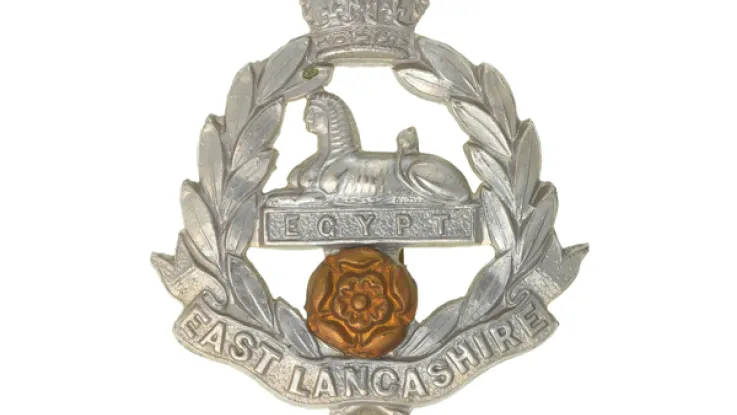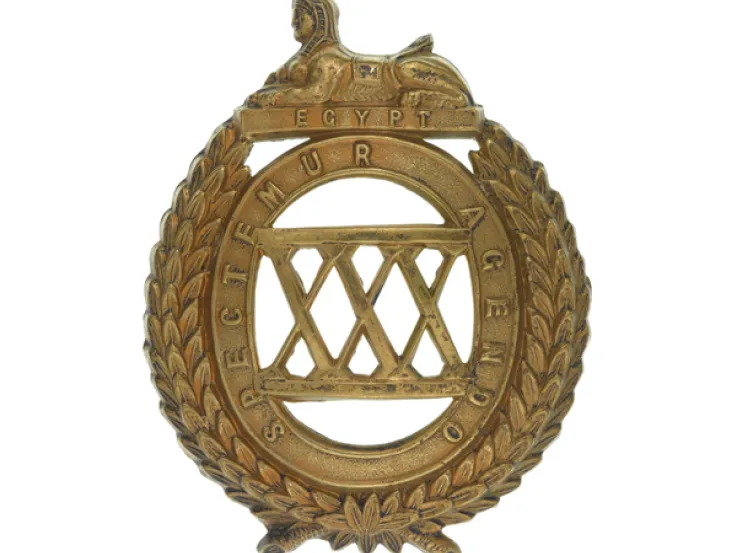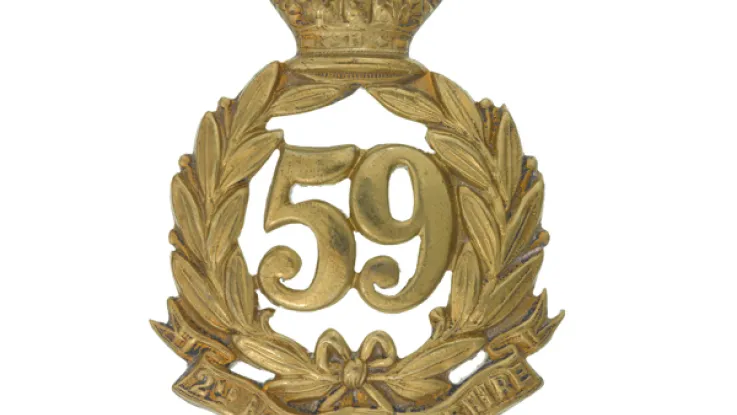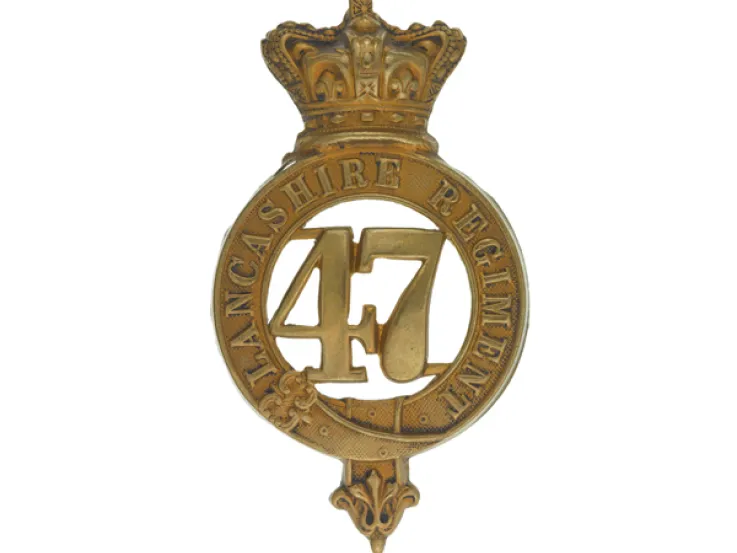Explore more from Regiments and Corps
The South Lancashire Regiment (The Prince of Wales’s Volunteers)
3 minute read
Origins
This regiment was formed in 1881 as The Prince of Wales’s Volunteers (South Lancashire Regiment) by amalgamating the 40th (2nd Somersetshire) Regiment and the 82nd Regiment of Foot (Prince of Wales's Volunteers). These became its 1st and 2nd Battalions respectively.
The next two decades saw both battalions undertake garrison duties in Britain and Ireland, as well as across the British Empire, including India, Aden, South Africa, Malaya, Gibraltar, Malta and Egypt.
The 1st Battalion fought throughout the Boer War (1899-1902), serving at several engagements including Spion Kop (1900) and Tugela Heights (1900).
First World War
2nd Battalion was already in Britain on the outbreak of the First World War (1914-18). It deployed to the Western Front in August 1914, where it remained for the remainder of the campaign.
1st Battalion was still in India at the outbreak of war, staying there until 1920 and fighting in the Third Afghan War (1919). The regiment also raised 19 Territorial and New Army battalions during the conflict. These served on the Western Front, at Gallipoli, Egypt, Mesopotamia and at home stations, eventually being awarded 64 battle honours.
1st Battalion spent almost the entire inter-war period in England, barring a three-year spell on garrison duty in Dublin from 1920 and a year as occupation troops in Germany in 1928. 2nd Battalion spent two years in Palestine from 1920 and then remained in India from 1922 to July 1940.
Second World War
The 1st Battalion was in Dover on the outbreak of the Second World War (1939-45) and deployed straight to France in September 1939 with the British Expeditionary Force. It was evacuated from France in June 1940. A month later 2nd Battalion arrived back in Britain from India to bolster the country’s defences against an expected German invasion.
In May 1942, 2nd Battalion took part in the Allied invasion of Madagascar before moving back to India in January 1943. In April 1944, the battalion moved to Burma, where it fought in the Arakan (1944), during the relief of Imphal and Kohima (1944) and the advance on Rangoon.
Meanwhile, 1st Battalion had landed on Sword Beach in Normandy on D-Day (6 June 1944), before fighting its way across France, Holland and Germany. Among the many engagements it fought were Caen (1944), Falaise (1944) and the Rhineland (1945). During the war, the regiment also raised an additional seven battalions.
Post-war
From 1946, 1st Battalion was stationed in Palestine as Britain wound down its mandate there. In 1947, 2nd Battalion moved to occupation duties in Trieste, where it was amalgamated with 1st Battalion the following year.
The regiment moved to Sudan in 1951 and then garrisoned West Berlin in 1956. Its final move as an independent unit came in 1957, when it garrisoned Hong Kong.
Legacy
In July 1958, it was amalgamated with The East Lancashire Regiment to form The Lancashire Regiment (Prince of Wales’s Volunteers).
Regimental museums
The National Army Museum works with a network of Regimental and Corps Museums across the UK to help preserve and share the history and traditions of the Army and its soldiers.
Discover more about The South Lancashire Regiment (The Prince of Wales’s Volunteers) by visiting the Lancashire Infantry Museum in Preston.


